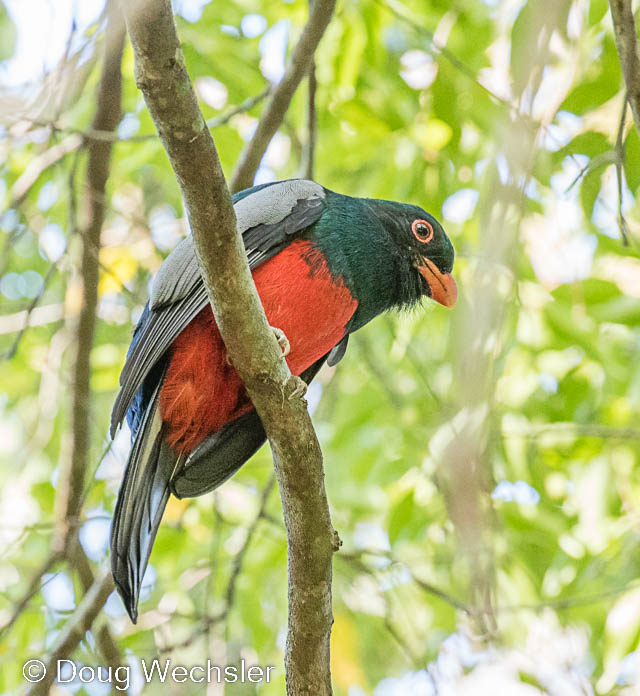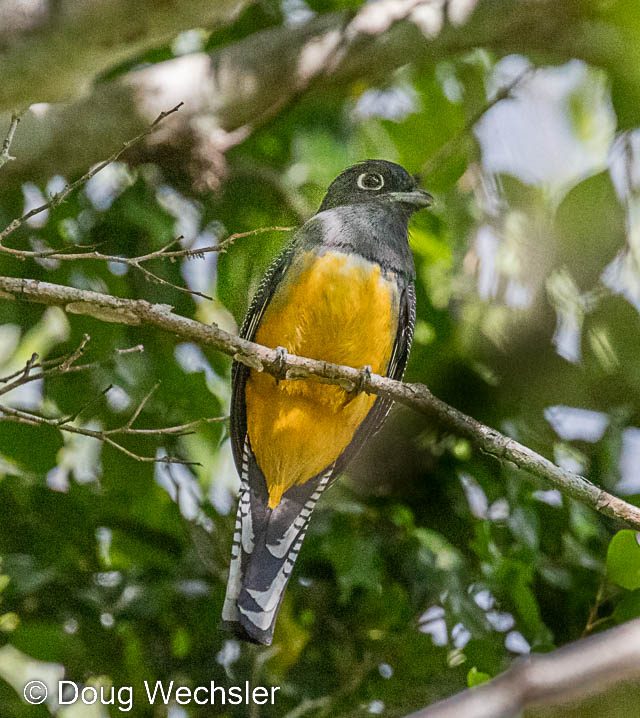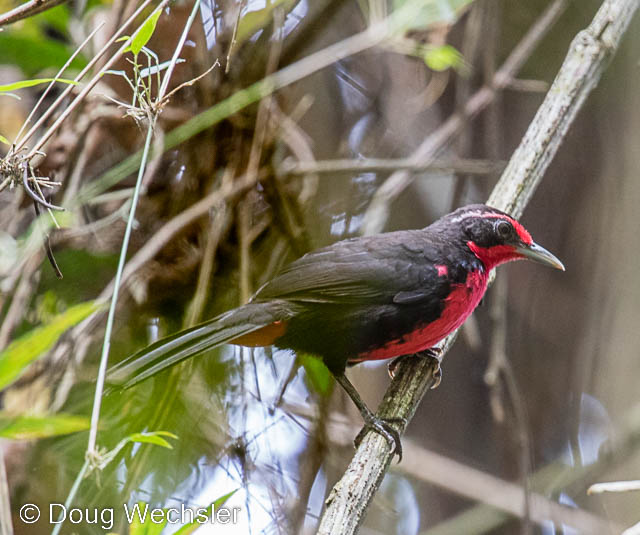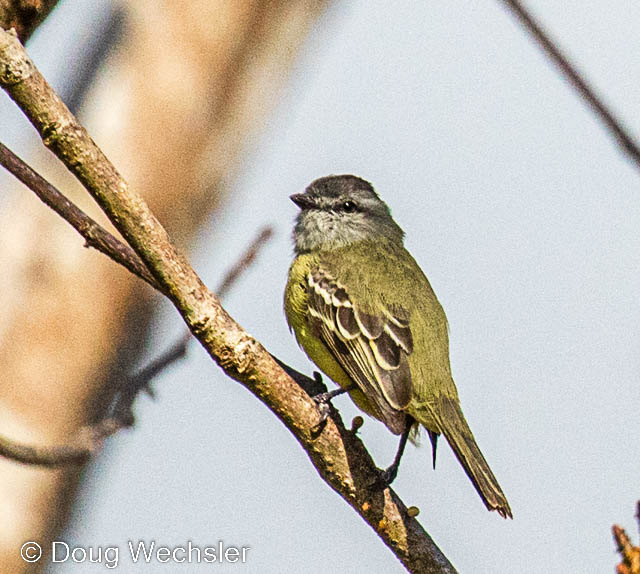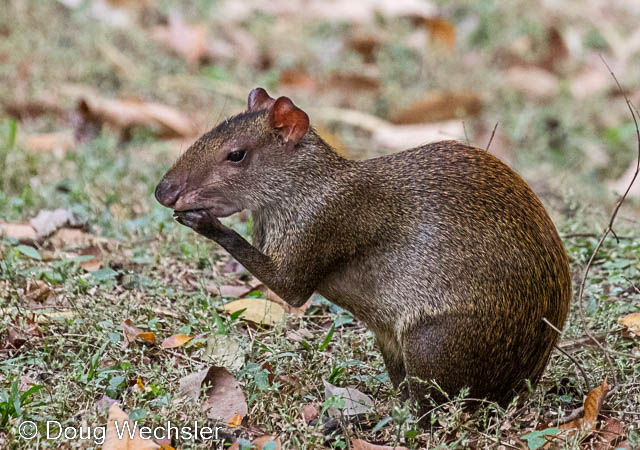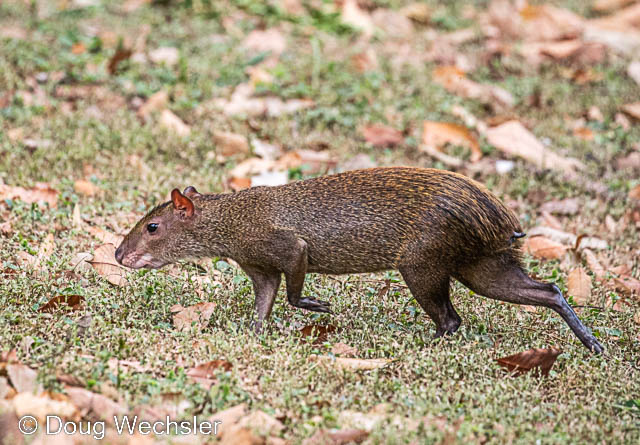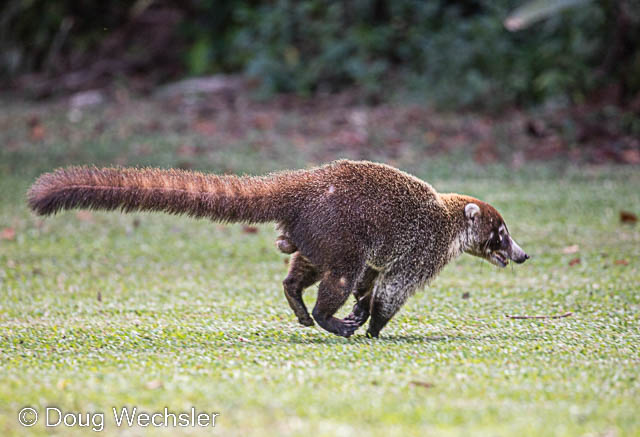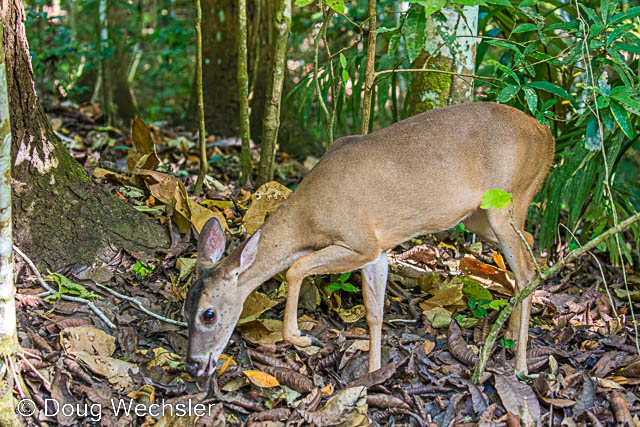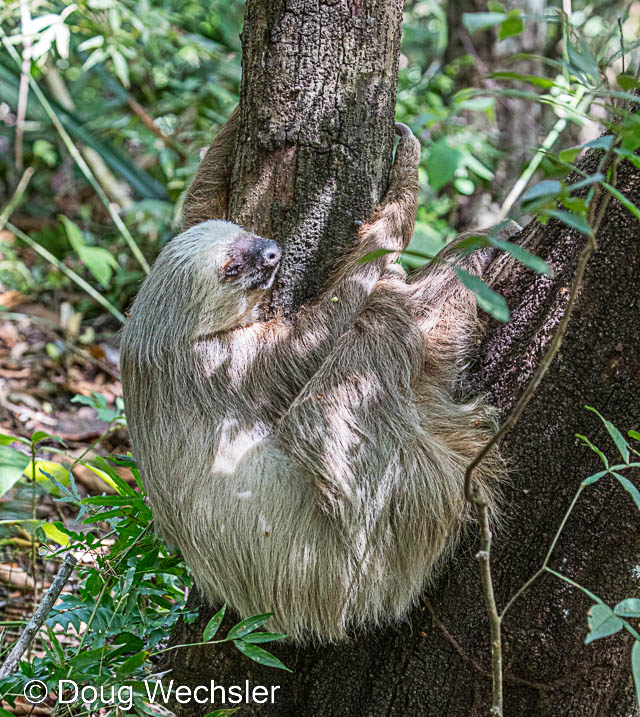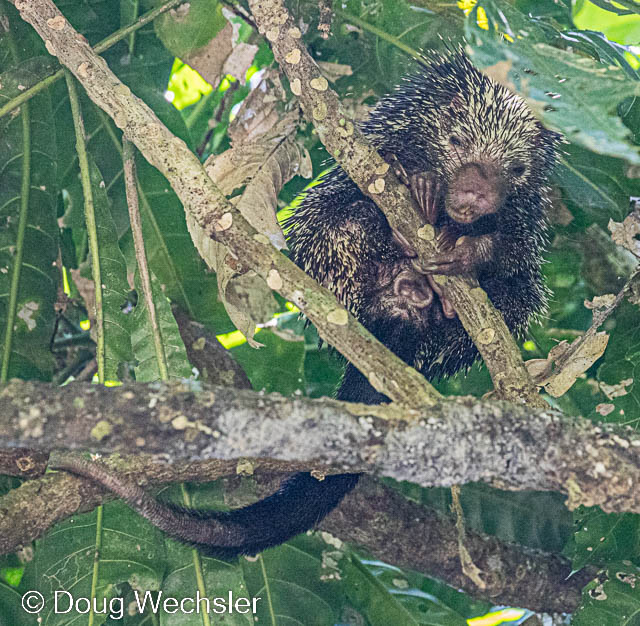Due to the history of the Canal Zone, much of the land around the Panama Canal was not developed into towns and cities or cultivated as farms. Consequently, forests extend right into the edge of Panama City. Panama now has three national parks as well as other protected areas close to the capital. From our base in the Canopy Tower in Soberanía National Park, we made excursions to several natural areas. Here is some of what we saw:
The brilliant Slaty-tailed Trogon is a common forest bird. It plucks fruits from trees, often while hovering, and sits for long periods waiting to dive for and grab insects. It nests in active termite nests or rotten stumps or limbs.
Gartered Trogons behave in much the fashion I just described for Slaty-tailed Trogon. However, they also nest in wasp nests, eating the inhabitants of the appropriated nest.
Secretive Rosy-thrush Tanagers live on and near the ground in dense undergrowth in second-growth forest. This poorly-studied species is currently considered the only member in the family Rhodinocichlidae. We spotted this one in Camino de Cruzes National Park.
We found this striking Rufescent Tiger-Heron at the Ammo Dump Ponds in Gamboa. In fact, it was there every time we passed by, foraging in the grassy wetland for insects, fish, snakes or other small animals.
Parque Natural Metropolitano sits at the edge of Panama City, an unusual proximity between nature and concrete jungle. It is a popular hiking destination for city dwellers and affords panoramic views of the city from the summit of Cerro Cedro.
Yellow-crowned Tyrannulets inhabit tree tops in mature and second growth forest. This tiny flycatcher is easiest to see at forest edges like this one in Parque Natural Metropolitano in Panama City.
We were fortunate to be able to visit nearby Summit Botanical Gardens in the late afternoon and to stay after closing. This afforded us the opportunity to see curious and excited children and then to enjoy peace and quiet once they left. The other mammals came out just around closing time. Maybe a correlation?
Agoutis are large, nearly tailless rodents, common in many forests where they are not heavily hunted. These two foraged peacefully in Summit Botanical Garden after hours.
Coatis are ubiquitous in this region. This is one of many cavorting in the Summit Botanical Gardens after hours. Much like their raccoon relatives they are opportunists and will eat just about any kind of food, even garbage.
Living in the city limits of Panama City, this White-tailed Deer pays little attention to the numerous hikers in Parque Natural Metropolitano. In most tropical forests I have visited, they are very difficult to observe.
This sluggish Hoffman’s Two-toed Sloth descended from the canopy in Parque Natural Metropolitano, perhaps for its weekly bathroom break. Normally, it sleeps in the canopy during the day and feeds on leaves at night. You can distinguish this species from the smaller Brown-throated Three-toed Sloth by the lack of a black mask. Don’t try to pick it up; it can slash with its two strong, front claws.
This porcupine with a prehensile tail was minding its own business when our sharp-eyed guide spotted it as we drove back up the road to the Canopy Tower. Like North American porcupines, they are well armored with sharp, barb-tipped spines.
A heavily-laden container ship navigates northbound through the canal toward the Caribbean. We learned that the record fee for the canal passage (based on the number of containers) was $1.4 million.
Returning to the Canopy Tower each evening, we were served a beautifully-prepared dinner. I had to be quick to photograph the bread-of-the-night before someone sliced into the chef’s delicious, artistic creation.

